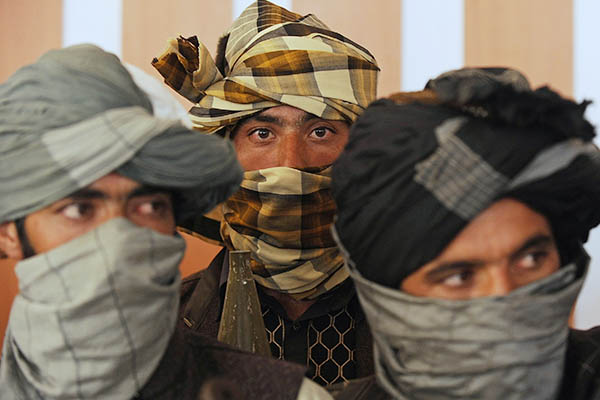
File Photo. Aref Karimi—AFP
Analysts say ‘inflated’ figures show militant group’s struggle to make an impact as security improves.
The Pakistani Taliban has released its first annual report, claiming it killed hundreds of people in 2015, with analysts suggesting its “inflated” figures illustrate the jihadists’ struggle to demonstrate their capability as security improves.
The report, written in Urdu, is a detailed list of attacks carried out on security forces, police and politicians in several Pakistani cities and the northwestern tribal areas between Jan. 3 and Dec. 26. Released on Dec. 29, it says that in 2015 the Pakistani Tehreek-e-Taliban (TTP) carried out 73 target killings, 12 ambush attacks, 10 raids, 19 IED blasts, five suicide attacks, 17 missile attacks and shot down two helicopters, and claims it killed some 686 people in 2015.
Claims by the TTP are often exaggerated. In the report, for example, it claims that it killed 247 people in an attack on Peshawar’s Badaber air force base in September. The official death toll was 29.
“This report mostly carries big claims, but there is no evidence to support these claims which are often inflated,” said analyst Rahimullah Yousafzai. “They have realized that this kind of report is necessary to show people that they are still active and potent,” he added.
Pakistan has been battling a homegrown Islamist insurgency for over a decade, with more than 27,000 civilians and security personnel dying in extremist attacks, according to the South Asia Terrorism Portal, a monitoring site. But overall levels of extremist-linked violence dropped dramatically last year, with 2015 seeing the fewest deaths since 2007—the year the Pakistani Taliban umbrella group was formed.
Analysts have credited the fall to military offensives against the Taliban in the tribal areas of North Waziristan and Khyber where they are headquartered, as well as operations in the country’s largest city of Karachi. Authorities have also taken steps to shut down insurgents’ sources of funding and arrested thousands for inciting hatred under a National Action Plan to curb militancy.
Yousafzai suggested the TTP had issued the annual report because “people are saying that their campaign has weakened.”
Amir Rana, the director of the independent Pakistan Institute of Peace Studies, said despite the setbacks the TTP remained operational in Pakistan. “Its real operational strengths are its affiliates and support networks, which still exist inside Pakistan and… will take time to break,” Rana told AFP. He predicted that the drop in extremist-linked violence would continue, however.
In its own annual report for 2015, PIPS said that “terrorism declined by 48 percent, but TTP remained a major factor of instability in 2015.”
Pakistan’s northwest tribal areas bordering Afghanistan suffered the most in 2015 with 268 deaths, followed by 257 in Balochistan, 251 in Sindh, 206 in Khyber-Pakhtunkhwa, 83 in Punjab and four in Islamabad, the PIPS report said, for a total of 1,069 deaths. PIPS said the TTP and its affiliates were responsible for some 57 percent of the 625 reported attacks in 2015, attributing the remainder to other jihadist, nationalist and sectarian groups.
